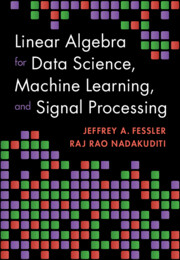Refine search
Actions for selected content:
48533 results in Computer Science
Smooth and proper maps with respect to a fibration
-
- Journal:
- Mathematical Structures in Computer Science / Volume 34 / Issue 9 / October 2024
- Published online by Cambridge University Press:
- 06 November 2024, pp. 971-984
-
- Article
-
- You have access
- Open access
- HTML
- Export citation
Gauging the effectiveness of a mobile application for learning English phrasal verbs
-
- Article
-
- You have access
- Open access
- HTML
- Export citation
The effect of textual and textual-pictorial glosses on incidental vocabulary learning in mobile-assisted listening
-
- Article
-
- You have access
- Open access
- HTML
- Export citation
Design of a wire-driven parallel robot for wind tunnel test based on the analysis of stiffness and workspace
-
- Article
-
- You have access
- Open access
- HTML
- Export citation
Data fusion of sparse, heterogeneous, and mobile sensor devices using adaptive distance attention
-
- Journal:
- Environmental Data Science / Volume 3 / 2024
- Published online by Cambridge University Press:
- 05 November 2024, e19
-
- Article
-
- You have access
- Open access
- HTML
- Export citation
Monitoring-supported value generation for managing structures and infrastructure systems
-
- Journal:
- Data-Centric Engineering / Volume 5 / 2024
- Published online by Cambridge University Press:
- 04 November 2024, e27
-
- Article
-
- You have access
- Open access
- HTML
- Export citation
Symmetric monoidal smash products in homotopy type theory
-
- Journal:
- Mathematical Structures in Computer Science / Volume 34 / Issue 9 / October 2024
- Published online by Cambridge University Press:
- 04 November 2024, pp. 985-1007
-
- Article
-
- You have access
- Open access
- HTML
- Export citation
Graph characterization of higher-order structure in atmospheric chemical reaction mechanisms
-
- Journal:
- Environmental Data Science / Volume 3 / 2024
- Published online by Cambridge University Press:
- 04 November 2024, e20
-
- Article
-
- You have access
- Open access
- HTML
- Export citation
A multi-task deep reinforcement learning-based recommender system for co-optimizing energy, comfort, and air quality in commercial buildings with humans-in-the-loop
- Part of
-
- Journal:
- Data-Centric Engineering / Volume 5 / 2024
- Published online by Cambridge University Press:
- 04 November 2024, e26
-
- Article
-
- You have access
- Open access
- HTML
- Export citation
A bibliometric analysis of artificial intelligence in L2 teaching and applied linguistics between 1995 and 2022 – ADDENDUM
-
- Article
-
- You have access
- Open access
- HTML
- Export citation

The Cambridge Handbook of Law and Policy for NFTs
-
- Published online:
- 02 November 2024
- Print publication:
- 17 October 2024

Linear Algebra for Data Science, Machine Learning, and Signal Processing
-
- Published online:
- 01 November 2024
- Print publication:
- 16 May 2024
-
- Textbook
- Export citation
Copyright page
-
- Book:
- The Cambridge Handbook of AI and Consumer Law
- Published online:
- 21 October 2024
- Print publication:
- 31 October 2024, pp iv-iv
-
- Chapter
- Export citation
11 - Protected by Design
- from Part III - Liability
-
-
- Book:
- The Cambridge Handbook of AI and Consumer Law
- Published online:
- 21 October 2024
- Print publication:
- 31 October 2024, pp 147-160
-
- Chapter
- Export citation
2 - Artificial Intelligence for Consumers
- from Part I - Rise of AI Consumer Markets
-
-
- Book:
- The Cambridge Handbook of AI and Consumer Law
- Published online:
- 21 October 2024
- Print publication:
- 31 October 2024, pp 9-18
-
- Chapter
- Export citation
14 - Use of AI Enforcement Technology (EnfTech)
- from Part IV - Harm
-
-
- Book:
- The Cambridge Handbook of AI and Consumer Law
- Published online:
- 21 October 2024
- Print publication:
- 31 October 2024, pp 193-212
-
- Chapter
- Export citation
Reviews
-
- Book:
- Data Structures and Algorithms in Java
- Published online:
- 19 December 2024
- Print publication:
- 31 October 2024, pp ii-iv
-
- Chapter
- Export citation
1 - Java Fundamentals
-
- Book:
- Data Structures and Algorithms in Java
- Published online:
- 19 December 2024
- Print publication:
- 31 October 2024, pp 8-56
-
- Chapter
- Export citation
17 - Binary Trees
-
- Book:
- Data Structures and Algorithms in Java
- Published online:
- 19 December 2024
- Print publication:
- 31 October 2024, pp 455-487
-
- Chapter
- Export citation





